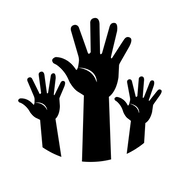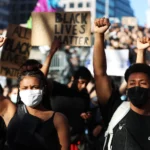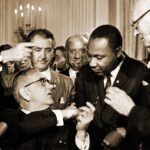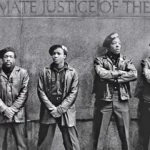The Civil Rights Movement, spanning from the 1950s to the 1960s, was a pivotal chapter in American history. Rooted in the struggle for racial justice, this movement aimed to dismantle institutionalized racism, segregation, and discrimination against African Americans. In this detailed exploration, we will delve into the timeline, key figures, goals, challenges, and lasting impact of this transformative period while addressing the top 20 frequently asked questions about the Civil Rights Movement.
I. Background and Precursors (Before 1950s):
A. Post-Civil War Reconstruction:
- Following the Civil War, Reconstruction attempted to address racial inequities, but the rise of Jim Crow laws led to segregation.
B. Early Activism:
- Activists like W.E.B. Du Bois and Ida B. Wells laid the groundwork for future movements, advocating for civil rights and anti-lynching measures.
II. Pre-Civil Rights Era (1950s):
A. Brown v. Board of Education (1954):
- The Supreme Court declared state laws establishing separate public schools for black and white students to be unconstitutional.
B. Montgomery Bus Boycott (1955-1956):
- Sparked by Rosa Parks’ refusal to give up her bus seat, the boycott led by Martin Luther King Jr. highlighted the power of nonviolent resistance.
C. Founding of the Southern Christian Leadership Conference (SCLC):
- Established in 1957, the SCLC, led by MLK, became a driving force for civil rights activism.
III. Mid-Civil Rights Era (1960-1963):
A. Sit-Ins and Freedom Rides:
- Activists engaged in sit-ins at segregated establishments, and the Freedom Rides challenged segregated bus terminals.
B. Birmingham Campaign (1963):
- MLK’s campaign in Birmingham, Alabama, brought attention to racial segregation and prompted significant civil rights legislation.
C. March on Washington (1963):
- The iconic march drew over 200,000 participants and culminated in MLK’s famous “I Have a Dream” speech.
IV. Legislative Achievements:
A. Civil Rights Act of 1964:
- Outlawed discrimination based on race, color, religion, sex, or national origin and ended racial segregation in schools, workplaces, and public spaces.
B. Voting Rights Act of 1965:
- Eliminated discriminatory voting practices, particularly in the South, ensuring African Americans’ right to vote.
V. Late-Civil Rights Era (1964-1968):
A. Selma to Montgomery March (1965):
- A pivotal event in the voting rights movement, marked by the brutal police attack on peaceful marchers.
B. Assassination of Malcolm X (1965):
- The prominent civil rights leader’s assassination marked a turning point, highlighting ideological divisions within the movement.
C. Fair Housing Act (1968):
- Banning discrimination in housing, this legislation aimed to address racial segregation in residential areas.
VI. The Movement’s Legacy and Ongoing Challenges:
A. Impact on Other Movements:
- The Civil Rights Movement laid the groundwork for subsequent movements, including feminist, LGBTQ+, and environmental activism.
B. Educational Reforms:
- The movement prompted educational reforms, fostering diversity in schools and universities.
C. Continued Struggles:
- While significant progress has been made, racial disparities, systemic racism, and challenges in the criminal justice system persist.
FAQs About the Civil Rights Movement:
1. What was the Civil Rights Movement?
- The Civil Rights Movement aimed to end racial segregation, discrimination, and ensure equal rights for African Americans.
2. Who were the key figures in the Civil Rights Movement?
- Key figures include Martin Luther King Jr., Rosa Parks, Malcolm X, John Lewis, and many others who played crucial roles in advocating for civil rights.
3. When did the Civil Rights Movement begin?
- While roots trace back to post-Civil War Reconstruction, the movement gained prominence in the 1950s and 1960s.
4. What were the main goals of the Civil Rights Movement?
- Goals included ending racial segregation, securing voting rights, and ensuring equal treatment under the law.
5. How did the Civil Rights Movement begin?
- Events like the Montgomery Bus Boycott and the formation of organizations like the SCLC marked the beginning, fueled by grassroots activism.
6. What were the major struggles faced by the movement?
- Struggles included racial segregation, voter disenfranchisement, violence against activists, and resistance to desegregation.
7. What were the pivotal moments in the Civil Rights Movement?
- Pivotal moments include Brown v. Board of Education, the Montgomery Bus Boycott, the March on Washington, and the Selma to Montgomery March.
8. Who were the other influential figures in the movement?
- Influential figures include John Lewis, Thurgood Marshall, Fannie Lou Hamer, and others who contributed significantly to the cause.
9. How did the movement impact legislation?
- Landmark legislation like the Civil Rights Act of 1964 and the Voting Rights Act of 1965 were enacted to dismantle segregation and secure voting rights.
10. What were the major achievements of the Civil Rights Movement?
- Achievements include the end of legal segregation, voting rights for African Americans, and a shift in societal attitudes towards racial equality.
11. How did the movement impact society?
- The movement challenged racist ideologies, fostering discussions on diversity, justice, and equality.
12. Were there setbacks for the Civil Rights Movement?
- Yes, setbacks included resistance to desegregation, economic disparities, and persistent institutional racism.
13. How did the movement inspire global movements?
- The Civil Rights Movement served as an inspiration for global movements challenging oppression and discrimination.
14. What is the legacy of the Civil Rights Movement?
- The legacy endures, with ongoing discussions on racial justice, diversity, and the need for continued activism.
15. Did the movement extend beyond African Americans?
- Yes, it influenced other marginalized groups, catalyzing movements for women’s rights, LGBTQ+ rights, and more.
16. What role did nonviolent protest play in the movement?
- Nonviolent protest, inspired by leaders like MLK, played a crucial role, emphasizing moral superiority and garnering public sympathy.
17. How did media coverage affect the movement?
- Media coverage, including televised events like the brutal police response to peaceful protests, garnered public support and increased awareness.
18. What role did churches play in the movement?
- Churches, particularly the black church, served as organizing hubs and sanctuaries for activists.
19. How did the movement impact education?
- The movement led to increased educational opportunities for African Americans and spurred discussions on multicultural curricula.
20. What challenges remain today?
- Challenges include systemic racism, economic disparities, and issues within the criminal justice system, highlighting the ongoing need for activism and reform.





